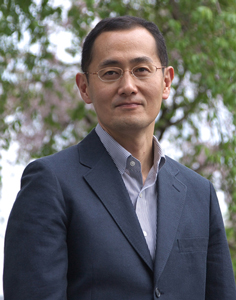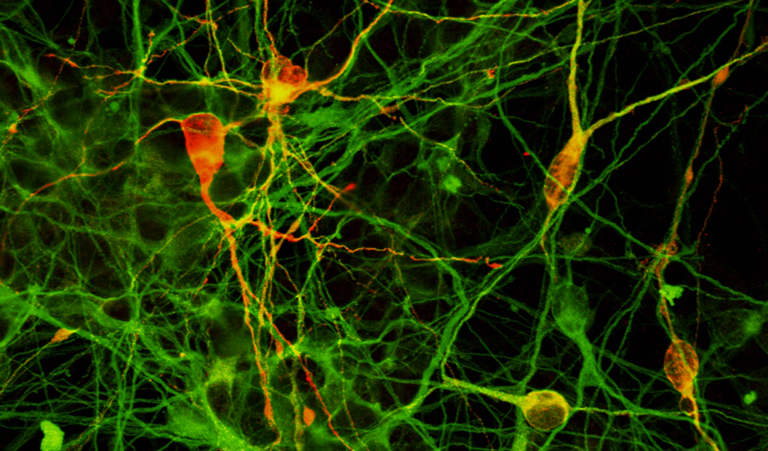
Using patents to ensure access to pioneering cell technology
By Professor Shinya Yamanaka, M.D., Ph.D., Director of the Center for iPS Cell Research and Application, Kyoto University, Japan
Shinya Yamanaka’s work has revolutionized our understanding of how cells develop and specialize. His pioneering research won him the Nobel Prize in Physiology or Medicine in 2012, alongside developmental biologist Sir John Gurdon. Here, Professor Yamanaka outlines his research and explains why patents are crucial to its advance.

an active user of WIPO’s Patent Cooperation
Treaty (PCT). (Photo: Professor Shinya Yamanaka)
The technology
My research focuses on pluripotent stem cells, which are cells capable of differentiating into any cell type within the adult body – nerve cells, muscle cells, lung cells, and so on.
Essentially, my colleagues and I managed to take mature cells and reprogram them into pluripotent cells called induced pluripotent stem cells (iPS cells). We first reported iPS cells from mouse skin cells in 2006 and from human skin cells in 2007. Since then, we have extended our research to iPS cells for new medical treatments. Almost all our research activities are based at the Center for iPS Cell Research and Application (CiRA) at Kyoto University in Japan.
Our success in generating iPS cells from human somatic cells (i.e. any cell in the body except sperm or egg cells) was a major breakthrough. It overcame the ethical concerns surrounding the use of human embryonic stem cells for medical research, because it made it possible to access pluripotent cells without the destruction of embryos. It also created many opportunities for medical research, particularly in the areas of diagnostics, drug screening and regenerative medicine.
To generate iPS cells, the information contained in somatic cells is reprogrammed through the addition of a small number of genes known as “nuclear reprogramming factors.”
iPS cells have two great advantages: they are (a) capable of differentiating into all cell types within the adult body and (b) they proliferate without limit. As a consequence, these cells have huge potential to treat a wide range of diseases for which effective therapies are not yet available.
Potential for regenerative medicine
One exciting application for which iPS cells hold great potential is in the area of regenerative therapy, where they can be used to repair or replace tissues. In 2014, the first clinical research using iPS cell transplantation was performed on a woman suffering from age-related macular degeneration by scientists at the RIKEN Center for Developmental Biology (CBD) and the Institute of Biomedical Research and Innovation Hospital. In this therapy, retinal tissues were created from iPS cells generated from her skin cells and transplanted into her eyes. Preparations are now underway to start similar iPS cell clinical research for Parkinson’s disease and other intractable conditions.

Potential for drug discovery
A second major application of iPS cells is in the area of drug discovery. Take, for example, a patient suffering from motor neuron disease. Motor neurons are not easy to access, which is why most drug testing is first done on animals, such as mice.
However, the way in which a drug behaves in animals may be different from the way in which it behaves in humans. The result is many false positives, where a drug found to be effective in animals is ineffective in humans, or false negatives, where a drug is found to be ineffective in animals but effective in humans but is never administered because it does not make it through the animal trial.
iPS cells help get around this problem, because researchers can use a more accessible cell type from the body, such as blood, and reprogram it to create motor neurons via iPS cells. This approach reduces the number of false positives and false negatives, and promises to expedite drug discovery and development.
Using intellectual property to ensure access
CiRA’s main aim is to realize iPS cell technology’s huge potential for medical care by creating new iPS cell-based treatments and making them widely available to patients as soon as possible.
As a university research institute, however, CiRA cannot achieve this goal alone. Private sector support is indispensable when it comes to translating our research results into effective treatments or drugs and delivering them to the broader population.
In light of this, since its establishment in April 2010, CiRA has pursued an intellectual property (IP) strategy that aims to influence how our research results are used. Where appropriate, CiRA seeks to secure patents over key technologies resulting from our research.
Let me be clear, our goal is not to monopolize or “ring-fence” iPS cell technology, but rather to ensure that it is widely available for development by other researchers through reasonable non-exclusive patent licensing arrangements.
Keeping the door open
By patenting iPS cell technology, we can control it, which means we can stop others from controlling it. What would happen if a basic technology that leads to innovations in drug development and cell therapy were patented and could only be used upon payment of a high license fee? In such a scenario, the technology would be accessible only to a small number of enterprises who could afford to pay the fee. In the world of medical research, many different researchers are tackling complex problems from a variety of angles. CiRA believes it is essential that all researchers have access to iPS cell technology because of the possible discoveries that their research may lead to. A strictly exclusive approach that narrows the base of research and development would likely translate into many lost opportunities for science.
Additionally, the need to pay high licensing fees would push up the cost of innovative treatments, restricting their access to a limited number of people. In other words, high license fees risk constraining the advancement of iPS cell research and its availability for patient care.
Research into iPS cells has attracted a great deal of attention and generated intense competition within the biotechnology sector. There is no guarantee that others will not seek to create a “patent wall” and lock the door on the technology. But through its non-exclusive patent licensing approach, Kyoto University is making every effort to prevent this wall from being built. Our aim in acquiring patents is to increase the degree of freedom with which the iPS cell technologies we have developed can be used. This effort, we believe, will ensure that iPS cells are widely available for use at reasonable and appropriate licensing fees and that iPS cell research is broadened and accelerated so that new drugs and treatment methods will be available to patients more rapidly.
Making iPS cell technology global
Disease affects us all. It shows no prejudice. CiRA therefore believes that all iPS cell technology should be available to all people, regardless of nationality. For this reason, we are working to obtain patents in as many countries as possible.
In this endeavor, we give much credit to the World Intellectual Property Organization’s Patent Cooperation Treaty (PCT). As of May 2015, Kyoto University holds patents relating to iPS cell technologies in 30 different countries. Like other universities and research institutes with limited financial and human resources, Kyoto University has taken advantage of the PCT’s simplified and cost-effective procedures. Using the PCT also gives us more time to assess whether we really need to patent a given technology.

Despite its many advantages, however, one point of frustration in using the PCT is the fact that it is not possible to receive identical patent rights in each of the countriesy in which we seek patent protection. This constraint is related to the significant variations between national patent laws and examination practices.
Catalyzing research
The steady progress CiRA has made in iPS cell research is in large part due to the support of the Japanese government and generous donations from individuals and organizations. However, another important aspect of our success has been easy access to new iPS cell technologies, from which we can build new medical therapies. These technologies are available because of our ability to secure patents. Because CiRA believes all scientists should benefit from these innovations, we want these patents to make iPS cell research more widely available, not less so. This strategy, we believe, is the fastest way to bring new iPS cell-based treatments to the clinic.
Despite our achievements, iPS cells are still far from ready for use in treating patients. There are still many hurdles to overcome in establishing reliable and safe treatment methods. These obstacles include peripheral technologies, such as cell quality evaluation and manufacturing methods, to ensure optimal iPS cell development.
CiRA is committed to research that ensures new, effective treatments are available to patients as soon as possible. Our non-exclusive, open-door approach to patent licensing aims to catalyze iPS cell research efforts around the world for the common good.
Patents: how they work
Inventors can obtain patents if they meet certain conditions as set out in national patent laws. They typically need to prove that their invention is new, non-obvious and useful. A patent is valid in most countries for a maximum period of 20 years from the filing of the first patent application. The scope of protection conferred by a patent depends on the claims made by the inventor in the patent application (and the legislation of the country in which a patent is granted.
A patent can be a valuable business asset which can be sold or licensed. The patent owner can decide how to use or license these rights and can thereby directly influence how the protected technologies are used within a given industrial sector.
The WIPO Magazine is intended to help broaden public understanding of intellectual property and of WIPO’s work, and is not an official document of WIPO. The designations employed and the presentation of material throughout this publication do not imply the expression of any opinion whatsoever on the part of WIPO concerning the legal status of any country, territory or area or of its authorities, or concerning the delimitation of its frontiers or boundaries. This publication is not intended to reflect the views of the Member States or the WIPO Secretariat. The mention of specific companies or products of manufacturers does not imply that they are endorsed or recommended by WIPO in preference to others of a similar nature that are not mentioned.